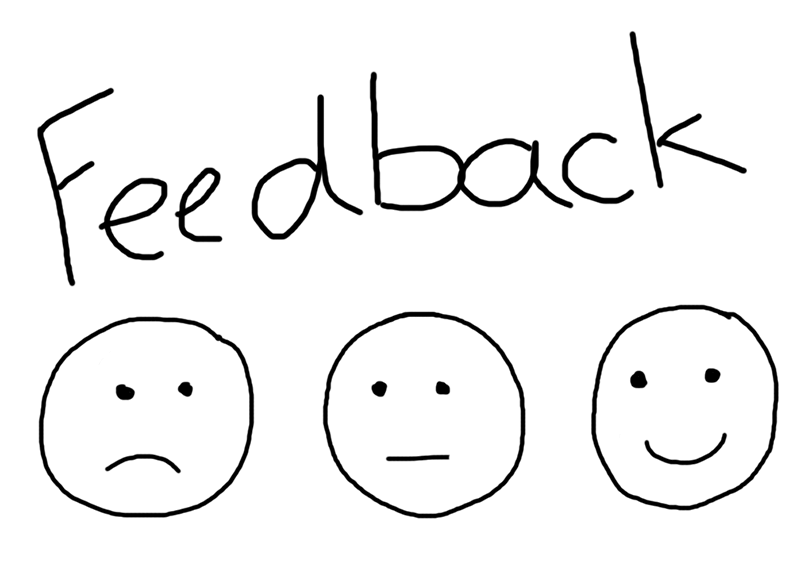Did you ever find yourself phrasing and rephrasing your feedback, only to get the other person more and more upset? It’s a stressful situation for everyone involved – and once you break that bond, it’s very hard to recover it.

Unfortunately, there’s no “undo” button for a feedback session gone wrong. So, if a giving feedback gives you the chills, take a look at these useful tips and tricks on how to prepare for a feedback session that will help both you and the other person build a better relationship.
Good feedback is like good food: it helps you grow
Everyone likes to give and receive feedback… as long as it’s positive. Most of us hate negative feedback so much, that we avoid calling it negative — we’ve named it constructive instead. But regardless of what you call it, it’s crucial to have regular feedback sessions because the people around you need to know where they stand, what to expect, and what is expected of them.
I remember when I first started working. I wasn’t sure if I was doing a good job or I needed improvement. I realized I needed feedback. This made me think that I should also learn how to give feedback, too.
Most of us think the purpose of feedback is only to describe all kinds of comments made after an event took place: advice, praise, critique. But effective feedback is actually more than that. Here’s how I would explain the differences:
- Compliments are positive but don’t tell us how to improve
- Criticism is negative but doesn’t tell us how to improve
- Feedback can be positive and/or negative, but the difference is – it helps us improve. That’s why it’s called constructive criticism
“Feedback is the breakfast of champions”, management expert Ken Blanchard once said. And the way I understand these words, is that someone’s development depends on their ability to draw meaning from feedback. It’s your responsibility to improve your guidance and coaching skills, so that you learn to give feedback that feeds their development, like a nourishing meal.
Rules for giving effective feedback

Since feedback is not just about unleashing the good, the bad, and the ugly, how do you make sure your message is clearly heard, understood and accepted? Here are a few rules that can help you give effective, emotionally intelligent feedback:
- Deliver positive and negative messages separately; mixing them only confuses the other person even more
- Focus on behavior, not the person; there’s a difference between “you did something stupid” and “you are stupid”
- Don’t focus only on weaknesses, but on progress, goals and aspirations
- If you can’t think of a constructive purpose for giving feedback, don’t give it at all
- Tell people not only what they’ve done wrong, but how they can improve. You can give them a concrete direction and a concrete plan for further improvement
- When sharing your concerns, give them the chance to respond
- Be open to the possibility you’ve missed something, or even that you somehow contributed to a damaging situation
In the end, the easiest rule to go by is this: would what you want to say be acceptable to you? Ask yourself honestly, and really think about the answer.
Who can receive feedback

When they think about delivering feedback, most people imagine dark business suits, grey meeting rooms and cold handshakes. But giving and receiving feedback is not just part of your professional development – it plays a major part in your daily life as well. The list of people you can give feedback to includes (but is not limited to):
- Your supervisors/managers
- The staff you supervise/manage
- Your peers and colleagues
- People in other teams/areas that you interact with or rely on to do our job
- Service providers (your waiter, your taxi driver)
- Your friends and family
I realized that when you begin to give feedback to people you interact with, you will discover that you bring them closer to you, you gain their trust, improve the relationships, and that leads to your own personal development.
What to keep in mind when giving feedback
The first step is to create a small scenario, a plan in which direction the conversation will lead to. Be also prepared to interact with the other person but don’t forget to give him/her a chance to respond. Here are some things you should consider when creating your feedback scenario:
- Create a conversation and ask the individual to respond
- Accentuate the positive
- Describe specific observations
- Focus on solutions
- Communicate the information about how his/her behavior is perceived and the effect that it has on you
- Plan for change, set deadlines to help attain objectives
Remember that, while you should be assertive in your discussion, the tone of the meeting should not put the other person in an inferior posture.
Conclusion
Everybody should develop and embrace the ability to give feedback. It’s important for the people you interact with if you give it in the right way. Feedback can drive motivation towards achieving the goal. This is why I fully agree with Eric Parsloe’s statement that “Feedback is the fuel that drives improved performance”.
Any feedback?
What message did you take home from this article? Do you have a scenario that you will use to give somebody a feedback? Let me know your thoughts in the comments section.